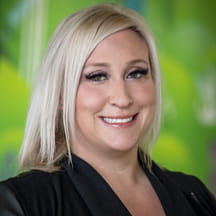Against all odds, the Oakland Athletics finished the 2002 Major League Baseball season with the most wins in the league. They broke an American League record by winning 20 games in a row—and they did it with one-third of the budget of other teams. The story of how they achieved that feat has served as an inspiration and model for an unlikely organization: Seattle Children’s. The hospital has produced success stories across its system using the Athletics’ approach, resulting in wins like increased capacity, enhanced clinical effectiveness, and reduced health care disparities.
After a devastating loss in the 2001 playoffs, the Athletics manager realized traditional baseball management methods weren’t working for his team. He hired an assistant, Paul DePodesta, to try a new approach using metrics that industry experts had largely ignored. Working backwards from their goal, DePodesta controversially decided the most effective way to win 100 games was to build a team based on “on-base percentage” metrics instead of traditional batting average metrics. This allowed the team to find undervalued players by identifying outliers within the metrics other teams were overlooking and build a team whose collective skills could win 100 games. In other words, the Athletics succeeded because they measured and managed what mattered.
Children’s hospitals have access to a treasure trove of data beyond what any baseball manager could dream of, captured by their electronic medical record (EMR) systems. Like with the Athletics, this information can empower a team-led improvement process focusing on data that matters to achieve remarkable results. The following case studies from Seattle Children’s show how frontline clinicians and leaders used data to identify outliers who were outperforming their peers, not by traditionally recorded metrics but by process or outcome measures the teams deemed important. They implemented strategies to replicate these behaviors, techniques and methods, and then used real-world data to create daily feedback loops to clinicians to create sustained improvements in their systems.

The GI endoscopy lab: On time, every time
The Gastrointestinal (GI) Endoscopy Lab had been running behind schedule for years. Each patient’s procedure started, on average, 25 minutes late. Over the course of the day, these delays compounded and resulted in the last patient’s care typically being delayed by more than two hours. The GI team was finishing its routine days well into the evening, resulting in staff burnout, high staff turnover, and high overtime costs.
The anesthesiology fellow Rachel Feldman, M.D., and GI fellow Irina Gorbounova, M.D., began an improvement process, working backwards from a desired endpoint: increase GI lab efficiency and finish caseload during daytime hours. To achieve that, the GI lab needed to start all the cases on time and decrease recovery room delays with patients who took longer to wake up after their procedure.
Feldman and Gorbounova used historical data to find outlier physicians who consistently outperformed their peer group from two perspectives: Who was on service when all the cases ran on schedule? Who was on service when patients cleared recovery in less than 55 minutes (versus the group average of 75 minutes)? They discovered one doctor whose patients consistently met these criteria. Feldman and Gorbounova identified his technique, choice of medication, sequence of medication administration and dosage that were different. They documented his drug protocol and created a macro in the EMR so any other anesthesia provider could recreate it.
By leveraging these actionable insights and scaling them across the GI lab, their case volume increased by 25%, all case on-time starts improved by 36%, and recovery time decreased from a mean of 78.8 minutes to 66.9 minutes. The GI Endoscopy Lab revenue increased by 25% (independent of the charges per procedure), representing an increase of more than $2 million in annual revenue.
By the numbers:
- 25% increase in case volume
- 36% improvement in on-time stats
- $2 million revenue increase

Urology outpatient surgery: More caseloads, same quality
Paul Merguerian, M.D., chief of urology, wanted to increase monthly case volumes at the ambulatory surgery center without a change in staffing or increase in overtime. Working backwards, he developed a framework: to increase daytime capacity, they needed to use the OR time more efficiently, without sacrificing quality. They leveraged a non-traditional metric, surgery prep time. This is the interval between anesthesia readiness and surgical start time that includes patient positioning, skin prep, draping the surgical field, and performing a safety time out.
The urology team’s average surgery prep time was 13.8 minutes. Using data, Merguerian identified two surgeons who consistently completed surgery prep time 30% faster. These surgeons had a different workflow with seemingly simple behaviors that saved minutes. They were consistently present in the OR as the patient arrived, helped transfer and position the patient on the OR table, and insisted their resident assist. They prepped the skin with iodine instead of chlorhexidine, eliminating the need for a three-minute dry time.
The entire urology group was able to save nearly four minutes per patient. That translated to an extra case per operating day, increasing monthly urology surgical volumes from 70 cases a month to 94 cases a month. Baseline surgical site infection rate was less than 0.1% throughout this improvement project. The additional increase in capacity resulted in $2.5 million in institutional revenue per year.
By the numbers:
- 4 minutes saved on each patient
- 24 additional cases per month
- $2.5 million in revenue

Surgery recovery: No opioids, no pain
For the last few decades, routine administration of opioid medications during surgery has been considered standard practice. While opioids are effective at relieving pain, they have many side effects ranging from mild (itching, nausea, constipation) to severe (respiratory depression). Despite advances in regional anesthesia techniques that can produce numbness over practically any surgical site, opioids have been impossible to displace—until now.
In 2018, spurred by a national opioid shortage, the anesthesiology team at the surgery center, led by Lynn Martin, M.D., used data to transition away from opioid-based protocols for adenotonsillectomy, one of their most painful surgeries. This shift was possible because the team could see it was not merely a change in practice but also in improved patient outcomes—it had already resulted in a five-times reduction in postoperative nausea and vomiting, the most common complication. By eliminating opioids from this surgery, they eliminated the greatest safety risk to high-risk patients, respiratory depression after surgery. Many of these patients could now be safely cared for as outpatients rather than requiring overnight hospital admission.
Just six months later, all ambulatory surgeries were successfully performed without opioids. This included surgeries across many surgical specialties, such as otolaryngology, general surgery, urology, ophthalmology, plastics, dental and even orthopedics. Even though physicians often hesitate to abandon established practices for new ones, the team’s ability to use observable data allowed them to confidently change, knowing it was better for patient care. Today at Seattle Children’s, over 98% of ambulatory surgeries and over 50% of inpatient surgeries are performed without the need for opioid medications. To date, over 40,000 patients have successfully had surgery without opioids.
By the numbers:
- 98% ambulatory surgeries with no opioids
- 50% inpatient surgeries with no opioids
- 40,000 patients recovered without opioids

Health equity: Equal outcomes, every patient
Sanjay Parikh, M.D., associate surgeon-in-chief, ensures high-quality surgical care is delivered to every patient regardless of race, ethnicity, language or gender. Parikh started with a simple question: Are my patient outcomes equitable? Using data, he surfaced a disparity in 30-day re-operation rates for tonsillectomies, his most common surgery. Somali and Vietnamese patients had a higher complication rate. When he looked more broadly, he saw identical patterns across his division. Parikh presented his findings to his surgical colleagues and hospital leadership and began working with a multidisciplinary group to elicit their ideas for closing the gap. The nursing team identified a communication issue in post-operative teaching materials: too much text, too complicated and not culturally appropriate for everyone. They simplified the teaching instructions into an infographic and within six months, the disparity gap was eliminated.
Jen Chiem, M.D., assistant professor of anesthesiology, examined the same group of surgical patients and asked the same question about anesthesia outcomes. Is the rate of post-tonsillectomy nausea and vomiting (PONV) different across race, ethnicity and language groups?
This is the most common complication for the most common surgery at Seattle Children’s. She discovered that at the main hospital, Black patients had a 9% PONV rate; at their ambulatory surgery center, it was 2%. She was able to share this with the group and create standard clinical work for administering prophylaxis to all patients unless there was a medical reason not to.
Within weeks, the PONV rate for Black patients reduced dramatically from 9% to 0%. This improvement has now been sustained for over a year.
By the numbers:
- 100% closure of disparity gap
- 4x reduction of PONV rate with Black patients
- 1 full year of sustained changes

Environmental footprint: Emissions down, savings up
In June 2022, CEO Jeff Sperring, M.D., announced Seattle Children’s would reduce the organization’s emissions by 50% by 2030. Multiple teams are now actively engaged to meet that goal. Assistant professor of anesthesiology, Elizabeth Hansen, M.D., led a team in the OR focused on reducing greenhouse gas emissions by 7% in their department.
Hansen developed a metric using routinely collected data: tapping gas flows from the anesthesia machines in the operating room to calculate the carbon footprint per minute of every anesthetic given. This data was stratified down to the clinician level and provided clinicians with daily, weekly and monthly feedback. Outliers who were outperforming were identified and their techniques and workflows served as examples for the rest of the group. This coupled with an educational campaign to implement simple and safe modifications to established workflows and team-approved practice constraints reduced OR emissions by 10 times in the last year, representing 500,000 kg of CO2. In addition to saving the planet from harm, this also saves the hospital $140,000 in anesthesia gasses per year.
In 2021, Hansen launched Project SPRUCE (Saving the Planet by Reducing Unnecessary Emissions) Forest, and Seattle Children’s is now leading an international consortium of peer hospitals to scale this work across the country and around the world.
By the numbers:
- 10x reduction in greenhouse emissions
- $140,000 saved in anesthesia gasses
- 500,00 fewer kilograms of CO2
The bottom line
Through these case studies, Seattle Children’s has demonstrated what is possible today when data, captured by EMR systems, is democratized and available to every hospital leader and provider. To enable this work, the hosptial created an Enterprise Data Warehouse (EDW) to store and organize the data, and made it available to all clinicians via a self-service adaptive clinical management solution.
Like DePodesta and the Oakland Athletics, hospital teams are empowered to use that data to create value for their patients and their institutions by measuring and managing what matters across facilities, providers, workflows and patients. They can find the outperforming outliers, previously hidden in their midst, learn from them, and scale their practices. In doing so, they transform how quickly they can adapt and improve their systems to increase efficiency, capacity, clinical effectiveness and equity.





